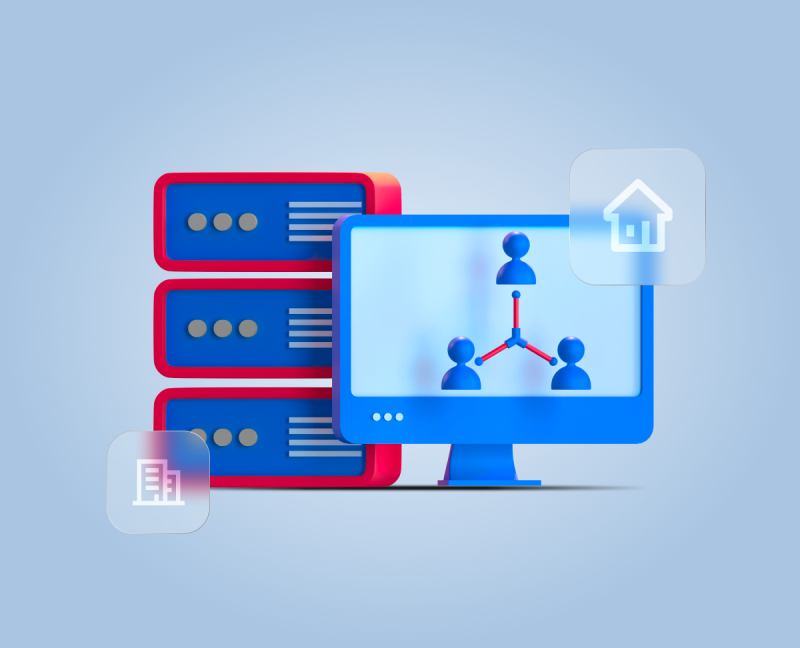
It's not as simple as you might initially think.
The COVID-19 pandemic shifted a lot about how we do business. But if there's one change that's still in the limelight, it's how, and more specifically, where we work.
While terms like 'flexible', 'remote' and 'hybrid' were starting to creep their way into job descriptions from around 2015, the COVID-19 pandemic accelerated their use exponentially. And, it changed talents’ expectations.
Over two years since the first lockdown in the UK saw the majority of the workforce go home one evening and not go back (either for a long time or at all), this is still one hotly debated topic that it seems we can't agree on.
LinkedIn polls and survey findings aside, you'd be hard-pressed to go a week without seeing or hearing opinions about business' approach to this new working structure. And it's permanently changing how companies are hiring and operating.
Ask any business owner or leader about remote working, and you could receive any manner of responses. Some remain vehemently in support of it. Some remain vehemently against it.
For the cons, reasons cited range from 'diluting company culture' to 'productivity isn't as good' (an argument which has widely been debunked). The fear that brands will lose their *spark* as a result of 100% at-home working is very real, particularly for investors concerned about how business' internal and external brands reflect one another.
Ask any professional, and most of them say they want at least some time working from home. We could list the reasons why, but it's likely you've already heard them 10 times over. And in an environment where talent really is holding the cards, it's clear that businesses need to listen and adapt in order to survive - let alone thrive.
100% remote working might seem like a clear-cut answer but many still have concerns - particularly over workforce wellbeing. It isn't only feeling 'switched on' for greater periods of time, and blurred boundaries, but social isolation for many, and the pressure to connect with clients, stakeholders and colleagues over a screen.
Onboarding is also incredibly challenging for new hires and their teams and managers. Combine the pressures of any new role with the challenge of doing so without ever seeing your team in-person, and businesses do risk investing in talent which isn't sustainable.
Ok, so most businesses no longer require teams to come into the office every day.
However, there are still some companies who are risking talent loss, and asking their workforce to return to the traditional 9 to 5 / 5 days a week model. There are notable obstacles to this, and the commute, cost and other factors aside, a major issue with full time office work is accessibility.
Whether it's parents or someone with a dependent, professionals living with a disability or long-term health condition, or neurodiverse individuals, the shift to remote working enabled a wider pool of talent to look at - and move up - the career ladder in a different way.
For many, even a single full day in the office can have a longer-term impact. And that's not even touching on the cost implications (including things like childcare).
From a business and individual perspective, there are significant overhead costs associated with office working. The pros - in-person networking, local economy boost, perceived social interaction, company culture, even incentives to support with the living cost crisis - aren't weighty enough for most professionals, and businesses are losing out.
So a hybrid approach to work is the only natural solution, right? Not quite as simple as that.
Combining time in the office and the option to work from home may seem like the perfect balance, but the problem with a hybrid model is that it means something different to different people.
For a young professional living 20 minutes away from your HQ, coming into the office two or three times a week isn't going to be too much of a struggle (generally speaking). But someone with a dependent who lives on the outskirts may look at that as a dealbreaker. Which is precisely the situation many corporations have been facing this past year.
Then there's the question of talent. Acquisition and retention has been a staple discussion for organisations since mid-2021, when The Great Resignation seemingly stripped the talent pool dry.
The solution for many businesses has been to tap into a much wider talent pool, either for permanent employees or freelance support. This has provided some much-needed relief for leaders and teams alike, but the end result has meant that some talent have the option of working remotely full time, while others are still obliged to come into the office. Not the best message for your internal brand.
If this is all sounding like there's no right solution, it's because there isn't. But there could well be a right solution for your business.
Your venture's operational structure is a unique, organic thing that needs to evolve over time. We know you get that. But it's never been so vital to look critically at your company's needs and objectives, and analyse how to align those with the needs and objectives of your workforce.
The best first step? Speak with your employees. If you're a larger company, an internal survey which presents all angles will help your HR team assess the true nature in a more meaningful way.
If you're a smaller firm, an anonymous survey could still support responses which are true and accurate, but your team may be open to discussing it 1-2-1. Which is ultimately the staple of a healthy company culture - and what all businesses should aim for.